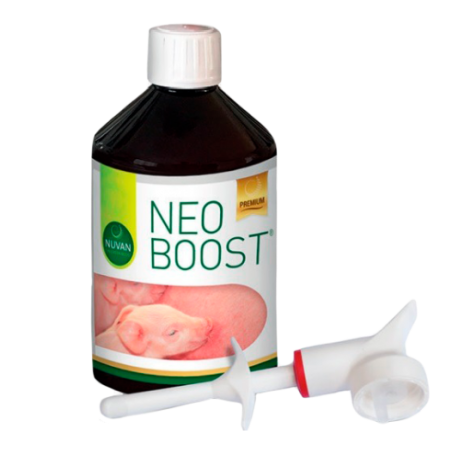Mortality and morbidity of newborn piglets are an economic burden and a threat to animal welfare. Perinatal mortality is particularly high in low birth weight (LBW) piglets. To unravel the possible underlying mechanisms, we investigated the effect of birth weight on morphology of the small intestine, in vivo motility, brush border enzyme activities (lactase, sucrase, maltase, aminopeptidase A, aminopeptidase N and dipeptidylpeptidase IV) and crypt cell proliferation (Ki-67 immunohistochemistry). This was performed in pairs of normal birth weight (NBW; 1.47±0.29 kg) and LBW (0.84±0.21 kg) piglets during the suckling period (0, 3, 10 and 28 d of age).
Our study showed no effects on small intestinal morphology, except for an age-related increase in villus width, crypt depth and thickness of the tunica muscularis. Regarding in vivo small intestinal motility, the peak distribution of the Evans bleu dye (geometric centre) was more progressed in NBW piglets of 28 d of age compared to the other groups indicating more propulsive strength. Brush border enzyme activities were similar in NBW and LBW piglets. However, age- and region-related differences were present, except for the aminopeptidase A activity. Lactase activity was higher in the proximal than in the distal part of the small intestine in all age groups and for both regions the lowest in piglets of 28 d old. In the proximal part of the small intestine, sucrase and maltase activities were increased in 10 and 28 d old piglets, whereas in the distal part of the small intestine the highest activities were observed in 28 d old piglets. No effect of birth weight on the Ki-67 proliferation index was observed. However, 10 d old piglets had less proliferating cells compared to newborn and 28 d old piglets. Intestinal fatty acid binding protein (i-FABP), a marker of damage of the intestinal mucosa was undetectable in LBW and NBW piglets throughout the suckling period.

To conclude, birth weight had no influence on small intestinal development and function. However, the results confirm that the development and function of the small intestine alters with age.
V. Huygelen, M. De Vos, S. Prims, H. Vergauwen, E. Fransen, C. Casteleyn, S. Van Cruchten, C. Van Ginneken. Birth weight has no influence on the morphology, digestive capacity and motility of the small intestine in suckling pigs. Livestock Science. Volume 182, December 2015, Pages 129–136. doi:10.1016/j.livsci.2015.11.003




